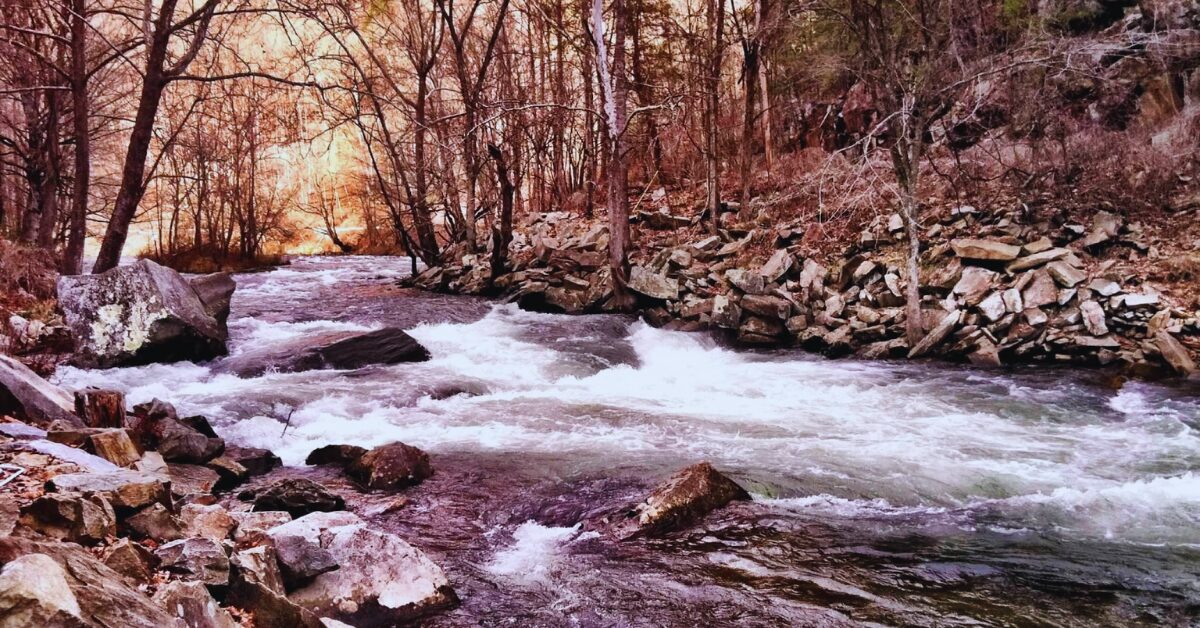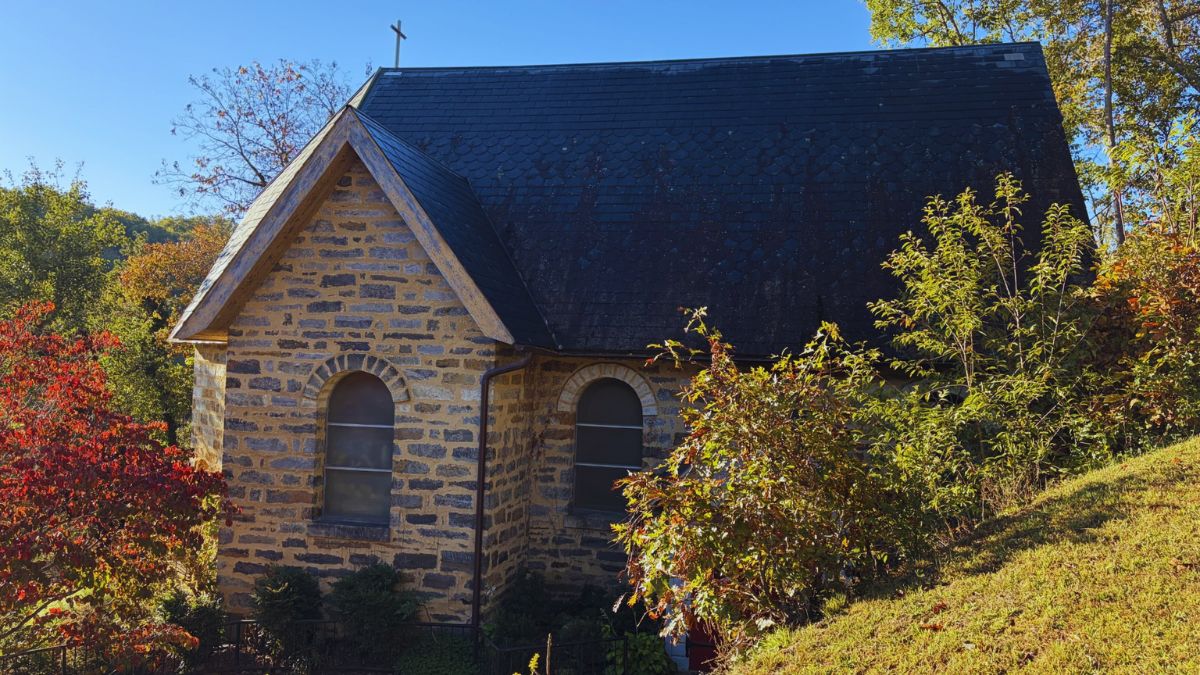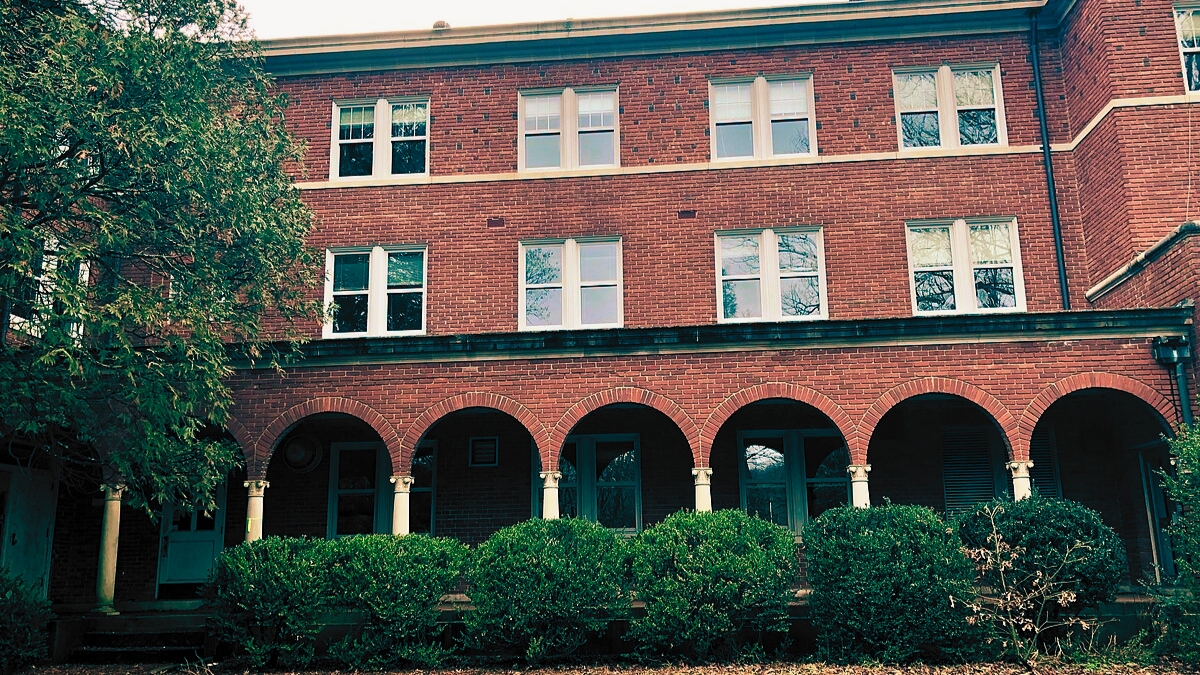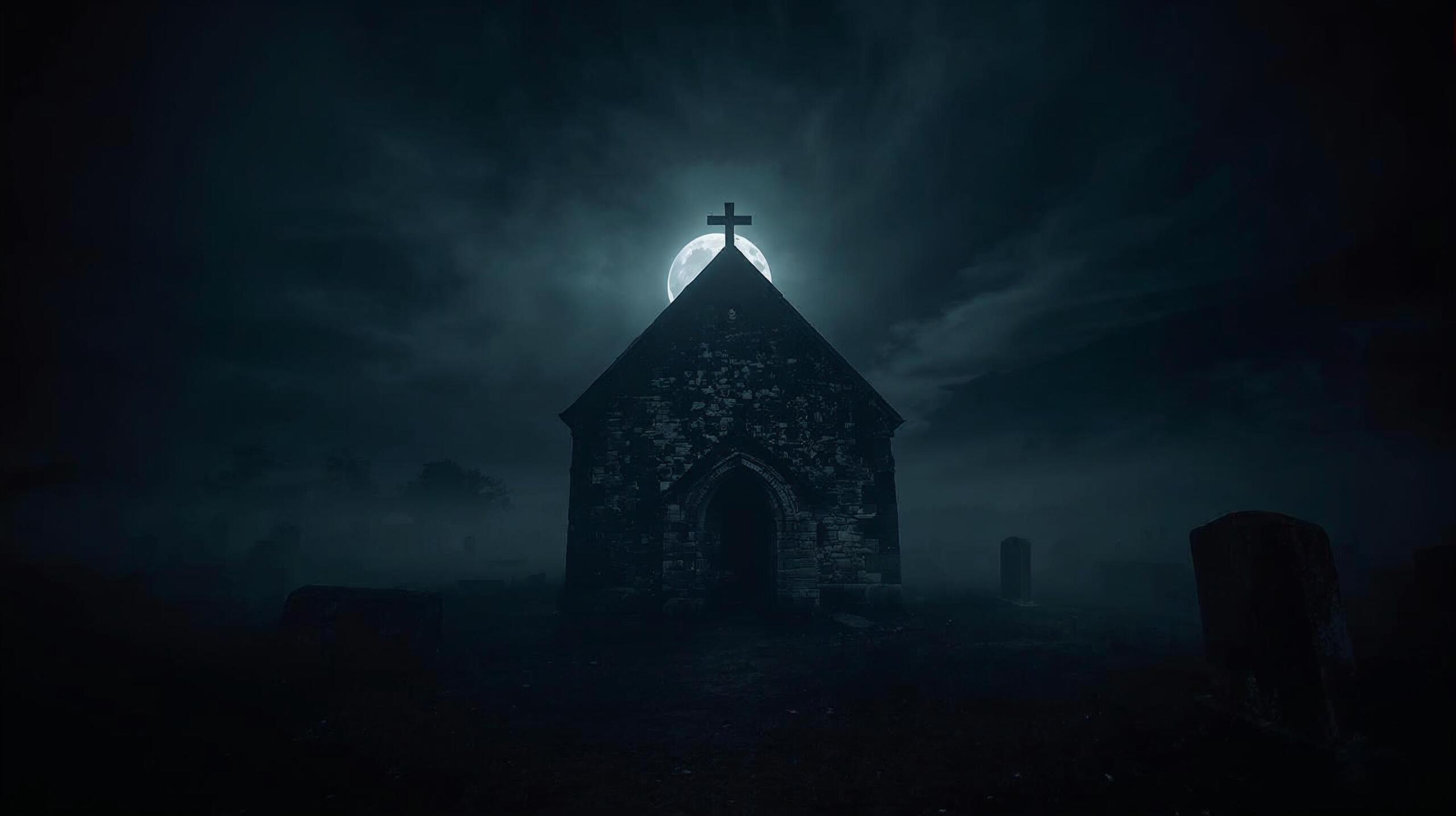EDITOR’S NOTE: Strangeville explores the legends, folklore, and unexplained history of Western North Carolina. From Cherokee mythology and Appalachian ghost stories to Bigfoot sightings and UFO encounters, the Blue Ridge Mountains have long been a hotspot for the strange and mysterious. Join us as we dig into the past and uncover the truth behind the region’s most curious tales.
BANNER ELK, N.C. — Lees-McRae College is known for its scenic mountain setting, historic stone buildings and the story of Emily.
Founded in 1900 by Presbyterian minister Rev. Edgar Tufts, Lees-McRae began as a boarding school for girls in the tiny mountain community of Banner Elk. It was named in honor of two women who supported education in the mountains, Suzanna Lees and Elizabeth McRae. Over time, the school expanded to include both boys and girls, eventually growing into a junior college and then a four-year institution. Its Appalachian roots remain strong, and many of its original stone buildings still stand.
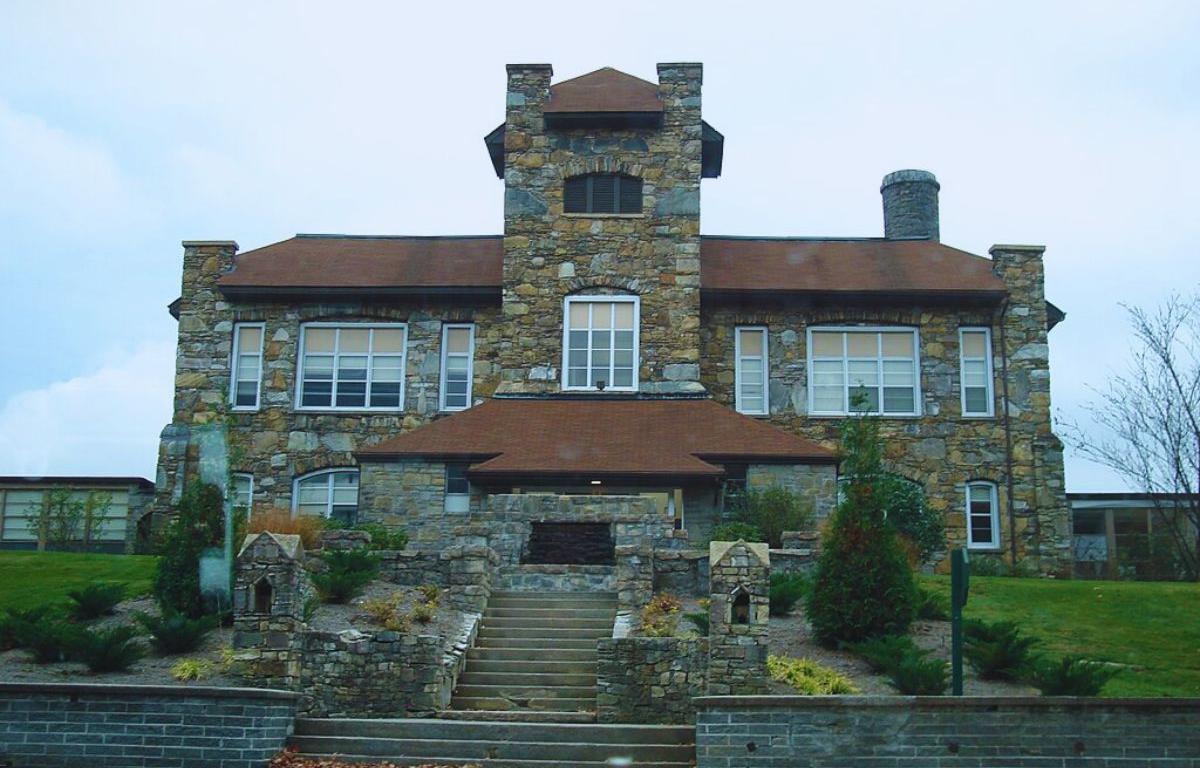
The name “Emily” has long been associated with ghostly sightings in Tate Hall, a former hospital that became a dormitory in the 1960s. For years, the spirit was believed to be that of a young girl who died of tuberculosis in the 1930s. Students reported flickering lights, footsteps in empty halls, and doors opening on their own. One story tells of an elevator operating without power, even though no elevator currently exists in the building.
Recent research and a 2000 newspaper article suggest that Emily’s identity may not be so simple. A gravestone in a nearby cemetery marks the resting place of Emily Draughn, who died in 1935. The inscription reads: “She is not dead, but sleeping.” Her age at death is not listed, and new interpretations of the legend raise the possibility that the spirit haunting the college may not be a child at all.
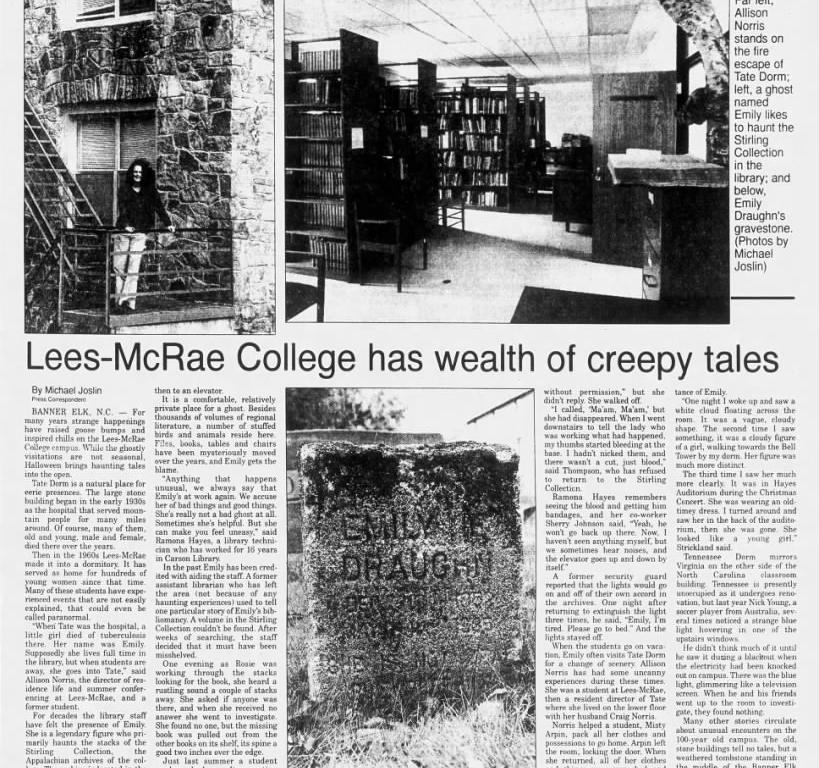
According to accounts published in the Avery Journal-Times in 2000, Emily has also been seen in the Stirling Collection in Carson Library. There, staff and students have experienced lights turning off and on, books shifting on their own, and even physical symptoms following ghostly encounters. One student worker, Chuck Thompson, recalled seeing a woman in a black dress with white flowers disappear down the stacks. Moments later, his thumbs began to bleed – without any visible cuts. He refused to return to the archives.
Library technician Ramona Hayes confirmed the incident and added that odd noises and elevator activity happen often, especially after dark. Staff say Emily is more mischievous than malevolent, sometimes even helpful as she will point out lost books or keep the lights off after being asked.
The spirit appears to move across campus during student breaks. When dorms are empty, reports shift back to Tate Hall. One former resident director, Allison Norris, recalled helping a student move out. After they locked the room and returned, every drawer and closet had been mysteriously unpacked.
Emily has also been spotted in other buildings, including Virginia Hall, Hayes Auditorium, and Tennessee Dorm. Witnesses describe her as a young woman in old-fashioned clothing. One student saw her drifting toward the Bell Tower. Another reported a blue light glowing in a dorm window during a campus-wide blackout.
With so many eyewitness accounts and a name carved in stone, Emily’s legend is firmly rooted in the history and folklore of Lees-McRae. Whether you believe in ghosts or not, the story of Emily is a reminder that some history lingers long after the textbooks close.




